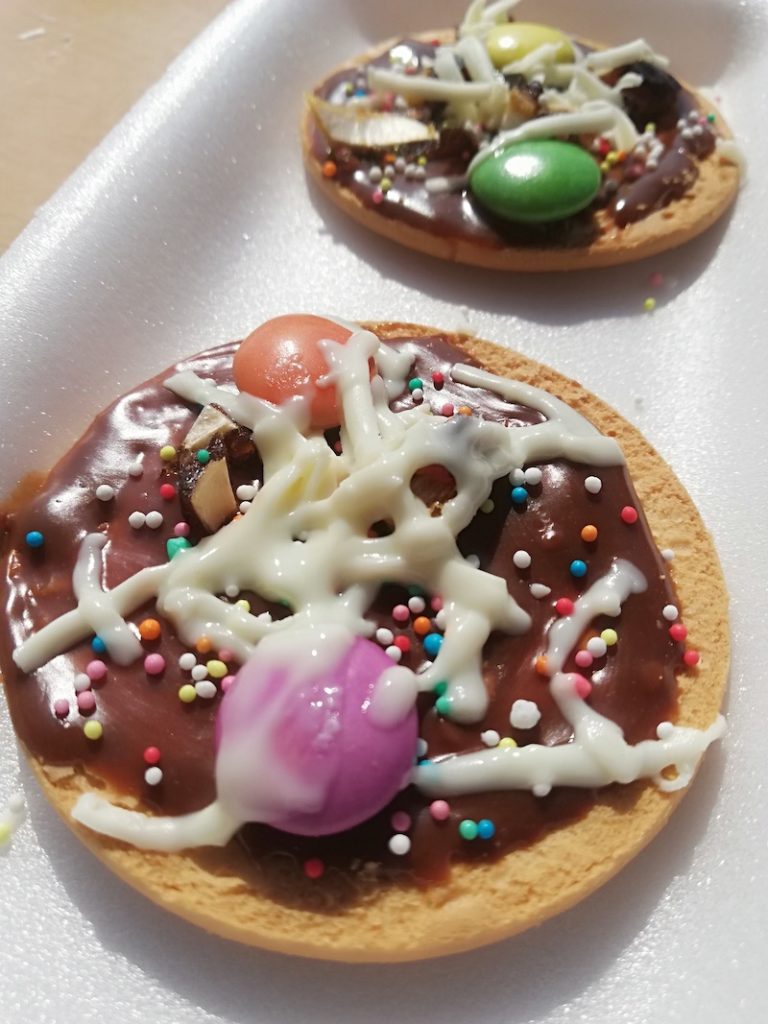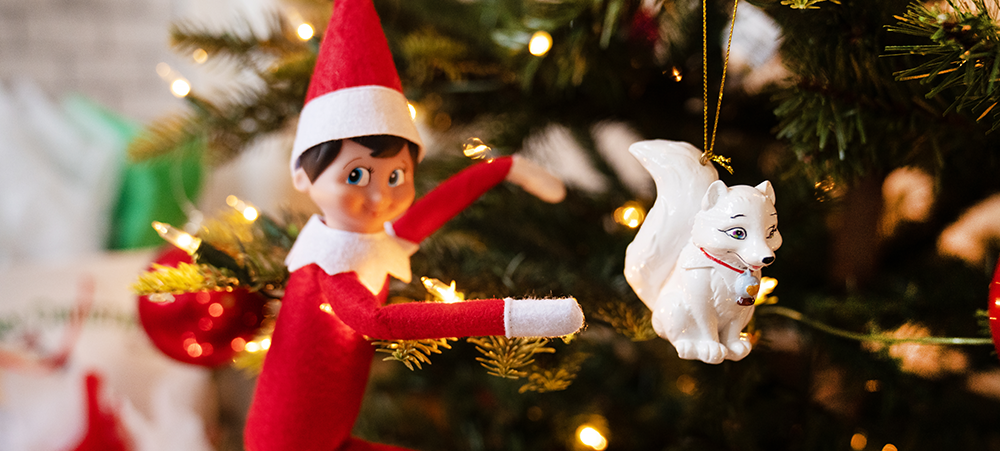This is one of the most common questions posed to a speech therapist.
As a parent, if this questions has come to your mind – this indicates a certain level of concern for your child which is a great start. An open minded parent, who shows keen interest in their child’s developmental milestones, is the beginning of a child’s progress. Being in denial about any delay in your child’s milestones is more detrimental to your child than the actual delay itself. For any concern, assistance is always available. Trust your gut feeling – motherly instincts are there for a very good reason, listen to it.
At the end of this article we share a fun activity to encourage your child to make verbal requests in various lengths with the final aim being – “Mommy, may I have more chocolate pizza please”
The standards that we have for our children differ according to various factors. Two parents, who may have had a rough childhood financially, could have opposing views regarding money when it comes to their own children. One parent may feel that their children need to value money in the same way hence they limit their spending and have a set amount of allowance they receive. The other parent may feel that they do not want their child to be ‘deprived’ the way they were hence they have no limits regarding how much money their child receives. Both parties need to have a common ground to avoid conflict in their relationship and the relationship they have with their child. You might be wondering – what does this have to do with my child’s speech development? In the same way 2 parents can have different opinions regarding finances, 2 parents can also have different opinions whether a child’s speech is delayed “just like so and so’s son” or a visit to a speech therapist is compulsory.
Depending on who you ask, the stage of “talking” is interpreted differently. For some, it may be when a child starts using vocalisations such as /nana/ whilst others it could be when a child uses a two-word utterance such as /baba gone/. The former is known as babbling which begins around the age of 4 months and the latter is achieved by 18 months.
Before we discuss these milestones in greater detail, let’s understand the difference between speech and language.
As elaborated in our May edition, All You Need to Know About Speech Therapists, “speech” is the actual sounds that emanate from the mouth. Disorders of speech can include stuttering, a lisp, apraxia, dysarthria. “Language” is a system of communication made up of written text and sounds. Language is further broken down into receptive and expressive language. A child who can follow age appropriate verbal instructions but is unable to express himself verbally is said to have delayed expressive language development.
At birth, your new-born’s sole method of communicating hunger, pain and discomfort is by crying (see Dunstan baby language by Priscilla Dunstan as featured on the Oprah Winfrey show). Cooing and laughter are 2 reflexes that a baby can’t control i.e. it happens naturally. Playing the game peek-a-boo is an ideal way to stimulate these reflexes in children 4 – 12 months. They would laugh (sometimes uncontrollably!) at almost any silly sound that you make. Just as walking is preceded by crawling, so too is talking preceded by babbling. For some babbling are the non-sense sounds which babies make that have the ability to melt anyone’s heart. Ironically, we can’t wait for babies to start talking, however once they are older and the questions don’t stop – we wish they would keep quiet.
4 – 5 months
- Simple babbling
- Ba – na – da
- Your child discovers s/he has a “voice” and will experiment with pitch, volume, tone etc
6 – 7 months:
- Reduplicated babbling (repeated the same sound)
- Baba – nana – mama – dada
- A string of the same sound may be repeated e.g. mamamamama
8 – 9 months:
- Variegated babbling (repeating different sounds)
- Maba – daba – bana
10 – 11 months:
- Jargon
12 month:
- First meaning word
By the age of 12 months, your child will understand more words than they can say i.e. their receptive language will be greater than their expressive language.
As parents, it is tempting for us to respond to our children’s non-verbal cues as compared to prompting them for a verbal response.
Let’s explain further using a practical example
Scenario 1
Ten-month old Ben was playing with a soft ball which has rolled under the bed. His mother noticed that the ball has disappeared. Without saying a word, she reaches under the bed to get the ball and pass it to Ben.
Ben’s mother could have used verbal and non – verbal communication which requires minimal effort but has a profound impact on Ben’s development.
Scenario 2
Ten-month old Tom’s mother, Sarah, noticed that his favourite toy fell off the table. She turned to Tom and asked, “Where is your toy” while using exaggerated facial expression, a questioning tone of voice and arms in the air. Sarah then puts her hand over her mouth and says “Oh-o!” with her other hand on her hip. By now Tom is carefully examining his mothers body language and taking cues from her tone of voice that something is wrong. Sarah then repeats the words “Gone!” in a stern tone a few times. Tom is making association between his mothers body language, tone of voice and choice of words. Sarah decides to let Tom crawl on the floor and look for his toy. He finds his toy and exclaims by saying ‘bababa’. Sarah then takes the toy away from him and places it behind her back, out of Tom’s sight. She asks Tom again, “Where is your toy”. Only once his facial expression changes does she repeat the words “Gone!” using the same tone of voice and facial expression as before.
Sarah has used the opportunity to expand her child’s language skills in a practical method.
The above scenario shows us how we can easily create a language rich environment for our children if we understand the great impact that a small change can have.
Scenario 1
Thirteen – month old Bianca has just finished eating a banana. She begins to cry. Her mother peels and slices another banana as she guessed correctly that her child wants more banana. Just like Ben’s mother, Bianca’s mother could have also used more verbal and non – verbal communication.
Scenario 2
Thirteen – month old Tracy drank all her milk but begins to whine. Her mother, Anne comes over to her and picks up her empty bottle. While shaking her bottle she asks Tracy, “Would you like more?”. Anne waits for a verbal response from her daughter. She repeats the question and comes face to face with Tracy so that she can see her mouth. Anne says “More?” which is repeated by Tracy. Anne fills more milk for her daughter and praises her verbal response by saying, “Good girl – you said, more!” In this manner Anne has encouraged her child to communicate verbally instead of making her daughter ‘lazy’.
Here is a fun and easy language based activity which you can do with your children aged 12 months upwards.
Bonus – Chocolate Pizzas
You will need:
- Marie biscuits (as your pizza base)
- Chocolate spread or 1 slab of chocolate, melted (as your pizza sauce)
- Smarties, Jelly Tots or Astros (as your vegetable topping)
- Optional: Sliced dates (as your steak)
- White chocolate, grated (as your mozzarella cheese)
- A butter knife

Method:
- Place a biscuit in front of you and ask you child if they would like a biscuit.
- Smear chocolate sauce or melted chocolate in the biscuit.
- Add on 1 sweet and ask your child if they would like more sweets or dates.
- Only hand over a sweet to add onto the “pizza” after they have used a verbal utterance to indicate yes.
- Decorate the “pizza” with grated white chocolate.
Your target for the activity is to get your child to request more items by using verbal means of communicating instead of pointing. This activity can be done repeatedly. Your sub goals for the activity can be higher each time.
First stage
My child should say 1 word to indicate that they want more
Second stage
My child should say the word /more/ or a similar sound to the word /more /when s/he would like more (the sound /m/ is acceptable)
Third stage
My child should say the word /more/ and no other distortions of the word
The final stage would be for your child to say, “Mommy, may I have more chocolate pizza please”
Activities related to food are exciting for children of all ages. Encourage your children to participate is meal preparation, setting the table and clearing up. It takes a bit of patience but the satisfaction in your children is rewarding feeling. After all, studies have shown that parents who engage in more meaningful conversation with their children have a greater vocabulary.
If you enjoyed reading this article or had fun making a chocolate pizza with your child, please let us know by sending an email to [email protected]
- When do children start talking? - August 3, 2023
- All You Need to Know About Speech Therapists - June 23, 2023
- Language Stimulation is a Piece of Cake! - July 10, 2020





